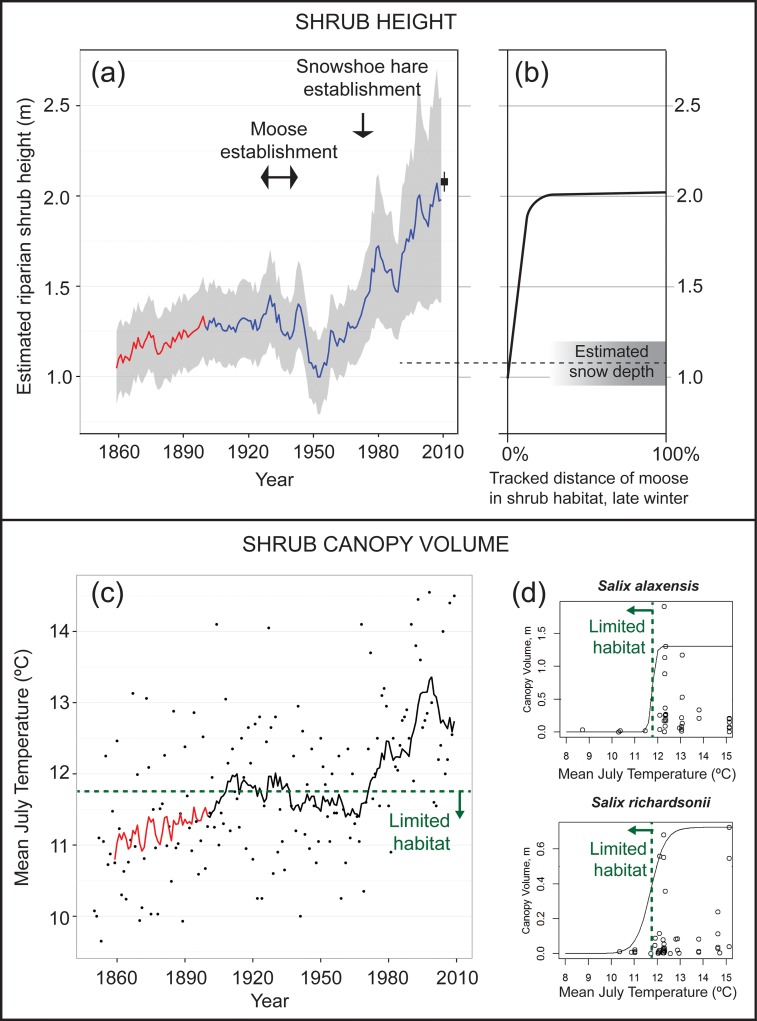Fig 2.
Estimated changes in moose habitat in Arctic Alaska since 1860, including changes in riparian shrub height (a, b) and shrub canopy volume (c, d). Moose require shrubs protruding above the snow in late winter for habitat [b; adapted from [12]], and the shrub height hindcasting (a) indicates that little to no habitat would have existed in Arctic Alaska c. 1860 (a, b). The blue shrub height line (a) uses an average of previous 10 years of thaw degree days to predict shrub height (Eq 1); shaded area indicates the 95% confidence interval; predicted height is consistent with measured shrub heights in 2010 (black box). The blue shrub height line uses interpolated observed temperatures, whereas the red line uses temperatures hindcasted from an average of the five highest-performing General Circulation Models [34]. The mean July temperatures of the late 1800s and early 1900s (solid line is average of previous 10 yrs) were less than 11.8°C (c), indicating that willow canopy volumes would have been greatly reduced (d), consistent with the absence of moose during that period (S1 & S2 Appendices). Temperature sensitivity of shrub canopy volume for Salix richardsonii, the species used to construct (a), is similar to that for the preferred forage species of moose, Salix alaxensis (d; reproduced from [36]).

